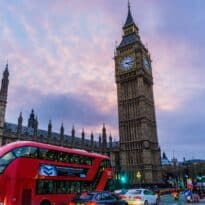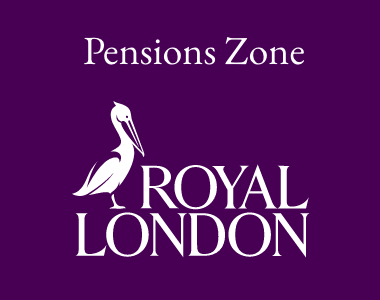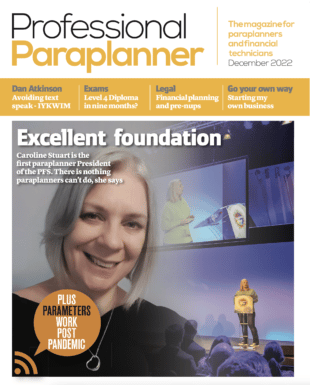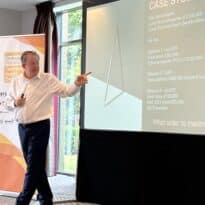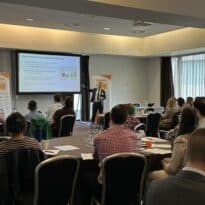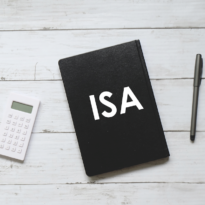Given the massive issues that are being caused by the annual allowance, if the limit stays the same then HMRC needs to rework the refund rules, suggests Gareth James, head of technical at AJ Bell
HMRC released statistics at the end of September showing an incredible jump in the number of savers who had reported they’d exceeded their annual allowance.
Looking back to the first year in which the annual allowance came into force, only 140 people reported an excess. Hardly surprising that the number was low given that the annual allowance was set at more than £200,000 in those days.
That number of individuals stayed much the same until the annual allowance was slashed to £50,000 with effect from 2011/12. At that point the number reporting an excess jumped to 5,570.
When the next big change in the annual allowance, the introduction in the taper, kicked in from the 2016/17 tax year, the number rocketed to 18,500, with the latest reported figures showing a further jump to 26,550 in 2017/18.
The bulk of this increase in numbers affected will relate to members of defined benefit pensions – the attention focussed on issues for higher earning members in public sector pensions, particularly the NHS, is evidence of this. However, AJ Bell is also seeing greater numbers of queries from advisers using our personal pensions regarding their clients, and also directly from customers.
The taper is the current big issue here, but I’d expect the money purchase annual allowance (MPAA) to have an impact in defined contribution (DC) schemes in coming years. The combination of the extremely penal level of the MPAA, the lack of availability of carry forward in DC schemes once it has taken effect, and the very low levels of awareness amongst savers of the fact they’re even affected by the MPAA, let alone its mechanics, is a toxic mix. It will lead to savers making contributions to schemes without being aware that they’re creating tax charges for themselves.
HMRC’s rules governing refunds of excess contributions and benefit accrual have been limited in scope since A-Day. The circumstances in which excess contributions can be refunded are restricted to payments made in the initial cancellation period of a personal pension (short service options are available in the occupational pension world), when personal contributions exceed UK relevant earnings, or when contributions have been made in ‘genuine error’.
None of these circumstances cover contributions which have exceeded the annual allowance. You might expect the genuine error rules to cover situations where an individual has paid a contribution of more than their available annual allowance by mistake, but that’s not what they’re designed to cover. Genuine error rules are meant to cover situations where things happen which are beyond a saver’s control, so for example when they give an instruction to their bank to stop or reduce contributions and that instruction isn’t acted upon.
My question is – should the pension rules be updated to allow refunds to be made when savers exceed the annual allowance?
If you look at the equivalent position in the ISA world, subscriptions paid which exceed one of the annual limits generally MUST be refunded. There isn’t any choice in the matter.
If you consider the time at which the rules regarding contribution refunds were written, you’re talking about a time when the annual limit was £215,000 (and due to rise) and only a few hundred people were exceeding the allowance each year. More than a decade later we’re talking about tens of thousands of people being affected by the annual allowance, and the annual contribution limit for some will have fallen from a peak of £255,000 to £4,000.
The massive issues we’re seeing with annual allowance charges in the defined benefit world are in the process of being tackled by the introduction of additional flexibility over the accrual of benefits.
Equivalent measures may help in the DC world, but they won’t solve the problem of savers exceeding allowances because of lack of awareness, or just because the rules are too complex for many to understand these days.
The option of scheme pays – the payment of the annual allowance charge from the pension scheme – will be available in some cases. But it is only compulsory for schemes to offer this where the full, £40,000 annual allowance is exceeded – not much help for those affected by the MPAA. Many will also feel that scheme pays isn’t particularly equitable given that it leaves non-tax-relieved funds in a pension, which are then likely to be subject to income tax when ultimately withdrawn.
Taking that into account, perhaps it’s time for HMRC to revisit its rules on contribution refunds and introduce a little more flexibility, freedom and choice around how savers can get themselves out of an annual allowance pickle.


